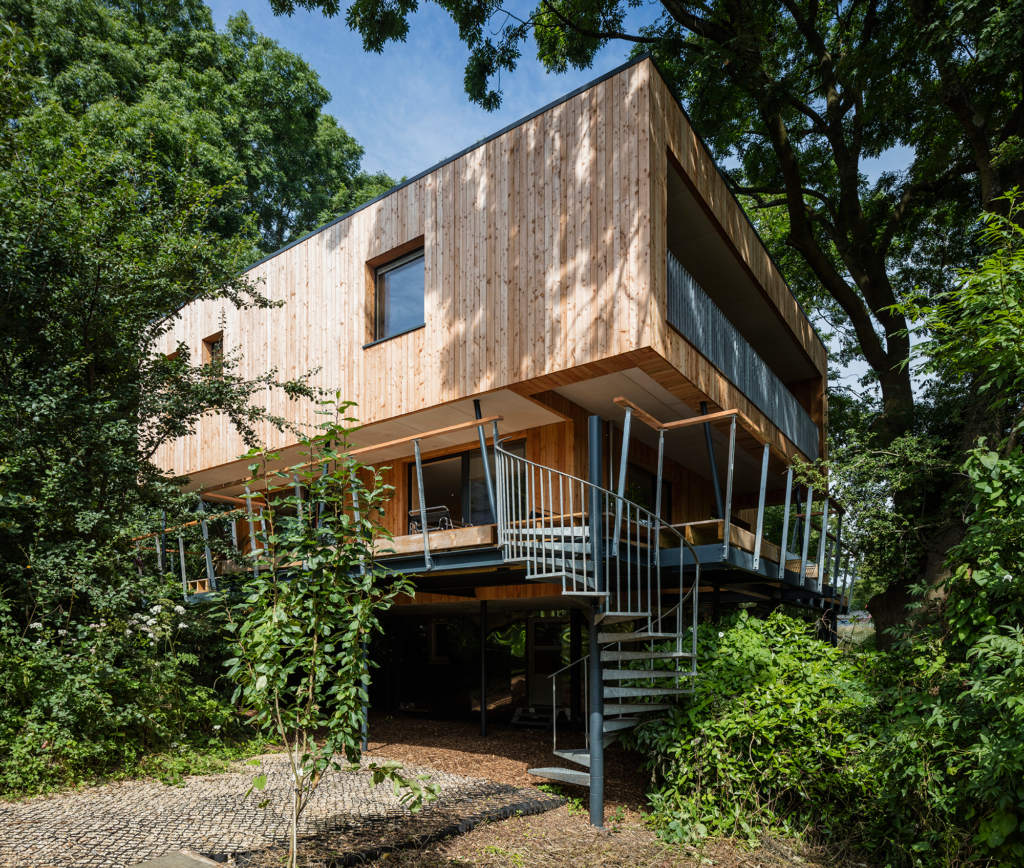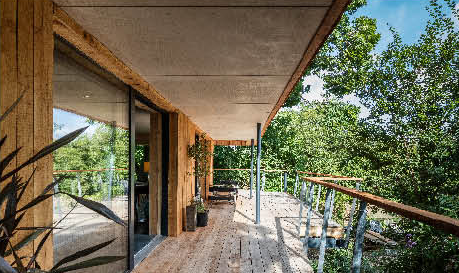
Learn from the experts TONIGHT with our online training course!
Use the code BUILD for 20% off
Learn from the experts TONIGHT with our online training course!
Use the code BUILD for 20% offKnowing the history of a site, or a property for conversion, will give you a good indication of how any future planning applications will fare. Many plots have a chequered history – with past refusals and maybe even appeals – and you need to know about this to make an informed decision before you make a purchase.
If you are buying somewhere that already has planning permission, and you want to build the project that’s been granted approval, then none of this really matters. But most people will want to put their own mark on a home, tweaking or completely changing the design or layout to suit their own requirements.
So, if this is the case, what’s the best way to approach a plot with a chequered history? If you are contemplating buying land without planning permission, aside from the usual cautions, a thorough understanding of the history, policy and how policy is applied locally is essential.
Start your research online via the planning section of your local council’s website; the amount of detail held on these portals varies considerably. Some have all the documents associated with applications spanning decades, others will only have information from the last few years, with older applications simply recorded as approved or refused.
Your solicitor’s searches should root out the full history, but an early warning of past problems, particularly recent ones, might well be significant in determining whether or not you buy it. In some cases, online records will split applications and appeals, so ensure you check for both. You should also look out for any enforcement history.
When searching through planning records, look for officers’ reports. These documents detail the ins and outs of the decision, and will have a summary of the feedback from the consultees, including neighbours, the parish council, highways, ecology, trees and so on. If any party had objections you can follow them up by looking at their actual correspondence, meaning you have the full details.
When looking at planning permissions, remember to read the conditions carefully and if there are refusals in the history, look at the reasons given. If there’s an appeal, read the decision letter – even a dismissal may contain useful pointers towards what might be acceptable.


Case study: Tree House on a Tricky PlotJon Martin and Noreen Jaarfar were desperate to follow their childhood dreams of creating a home in the woods. However, the scheme was made more challenging by the fact that the site was surrounded by 27 protected trees. The local authority had rejected two applications for traditional-style houses, so the project had to be approached from a different perspective. They decided to use the trees as inspiration for their design, creating a home that worked in harmony with the landscape. The end result, executed with the help of Tomas Millar from Millar + Howard Workshop, is a timber frame Passivhaus designed with a web of angled steel piles, supporting a stack of three off set cantilevered stories. This complex structure avoids disturbing the ground, while British larch cladding blends in with the changing colours of the trees. |
Refusals of consent are generally based on planning policy. In particular, new build projects can be turned down because of fundamental conflicts, such as a plot being situated outside a development boundary or a conversion not fitting specific guidelines.
These strategies tend to change over time when Local Plans are reviewed, and in response to changing government policy guidance. If permission was refused based on guidelines that are a few years old, the proposal might now be acceptable. Always check which Local Plans were in force at the time of any refusal, as they may well have since been revised or replaced.
Be aware, too, that if a council doesn’t have a five-year housing land supply, then its policies relating to providing opportunities are considered out of date and don’t carry full weight in decision making. This includes development boundaries around settlements, enabling peripheral plots to become viable.
These issues can get quite technical, so it might be prudent for you to take professional advice if it appears central to the fortunes of your project.
Where consent has been refused due to design concerns, the prospects for overcoming that refusal can improve with the passage of time. This could be due to policy alterations, but also staff changes – one planning officer’s subjective opinion can differ from another’s.
This can apply particularly to issues around listed buildings and those in conservation areas, where different officers can have very different but equally strongly held opinions about plans.
Where design has been central to a refusal of permission, again, look closely at the officer’s report to find out specifically what caused the refusal.
Some applicants have very specific requirements and are not willing to negotiate to achieve a mutually acceptable solution. Plans might have been turned down where just a few stylistic tweaks could have rendered it acceptable.
In addition to design, there is a host of practical issues that can thwart getting approval, from a dangerous access through to flood risk, protected trees or species on the site, archaeological remains, inadequate drainage, the list goes on.
Occasionally, for example where flood mitigation measures are introduced, these problems can alleviate further down the line. That’s also the case with highway safety issues, where updated guidance in the National Planning Policy Framework create a less demanding safety regime than was the case a decade or so ago
In many cases you will need to look for a way around the problem that was not considered before.
Local politics can also play a major role in planning decisions, too. This is especially evident where applications are recommended for approval by planning officers but refused by councillors sitting on the planning committee.
Where somebody else has failed to get permission, and perhaps made themselves unpopular in the process, you might be able to bring a more cooperative approach, that brings neighbours on side and with them, local councillors. Also, explaining your motivations and objectives to councillors can be helpful, and may provoke a more flexible approach towards development on your plot.
A chequered history isn’t a problem if, at the end of that saga, planning permission has been granted for something that’s at least close to what you’d like to build. But if the permission isn’t what you’d consider optimal for the site, you’ll have to think seriously about whether this is adequately reflected in the asking price.
It’s essential that you’re realistic about the prospects of getting what you want. Where there’s real doubt, rather than gambling on the outcome, it’s a sensible move to reduce your risk by making an offer that’s subject to you getting the permission you want.
Such contracts need to be carefully drawn up, to ensure they allow for potential time delays, awkward conditions attached to the consent or even an appeal if permission is refused. Make sure your solicitor is familiar with this type of contract, as not all are, and it takes experience to get it right.
If the plot has had severe planning problems in the past, and it looks as though it might take some time to resolve all the issues, an option can be a useful way forward. For a nominal sum, you buy the sole right to purchase the plot for a given period. The option contract specifies what you’ll pay, either as a specific amount or as a percentage of open market value when you exercise your option to buy.
You undertake, within the agreement, to use your best endeavours to gain planning permission. If you ultimately fail to get consent, then you don’t have to exercise your right to buy and can walk away having only incurred the initial legal fees and planning costs – much cheaper than purchasing a plot that can’t be developed.
